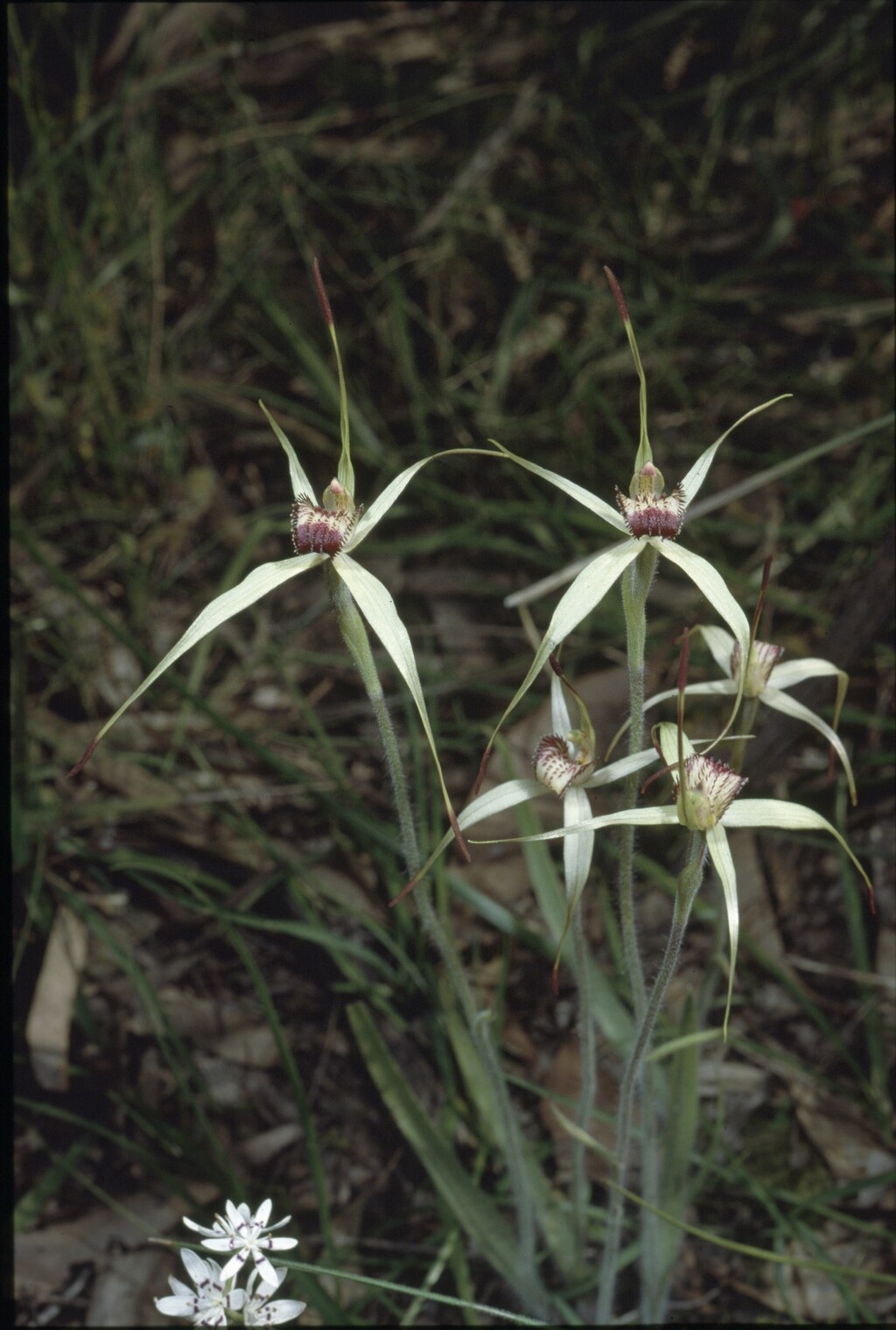Caladenia valida
(Nicholls) M.A.Clem. & D.L.JonesFlowering plant 20–40 cm tall. Leaf 10–15 cm long, 10–25 mm wide. Flowers 1–3; perianth segments 3–5 cm long, cream to white, sometimes with reddish markings; dorsal sepal stiffly erect or tip drooping; lateral sepals stiffly spreading or tips drooping, flattened at base, 3.5–4.5 mm wide, tapered to a filiform, clubbed tail, clubs 3–5 mm long, with red-brown, more or less contiguous, sessile glands; petals slightly elevated and spreading widely, flattened at base, tapered to long acuminate apex, sometimes with small clubs. Labellum curved forward with apex recurved and lateral lobes divergent, lamina ovate, obscurely 3-lobed, 12–15 mm long and 9–11 mm wide (when flattened), cream to white with red calli and occasionally a red mid-lobe; marginal calli on lateral lobes linear, to 2 mm long, becoming shorter and triangular towards mid-lobe where margins broadly toothed; lamina calli in 4 or 6 rows, crowded, barely extending beyond bend, linear to foot-shaped, to 1.2 mm long at base of lamina, decreasing in size towards apex. Flowers Sep.–Oct.
VVP, GipP, OtP, WaP. Also SA. Rare and restricted in Victoria to coastal or near-coastal heathland or heathy woodland near Portland and Anglesea.
Similar to Caladenia reticulata but taller and with larger, whitish flowers with stiffly spreading perianth segments.
Plants from Raymond Island near Bairnsdale have more prominent clubs, but in most respects fall within the circumscription of C. valida.
Entwisle, T.J. (1994). Orchidaceae. In: Walsh, N.G.; Entwisle, T.J., Flora of Victoria Vol. 2, Ferns and Allied Plants, Conifers and Monocotyledons, pp. 740–901. Inkata Press, Melbourne.
 Spinning
Spinning

